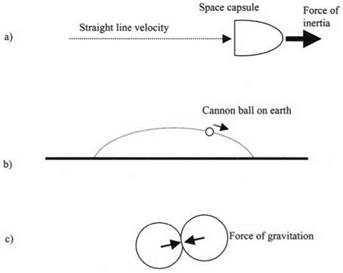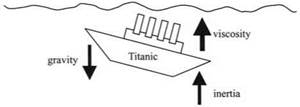For we must learn from the Phaenomena of Nature what Bodies attract one another and what are the Laws and Properties of
the Attraction Isaac Newton, Opticks,1 p. 376
Isaac Newton was obsessed with the attractions between the objects which we see about us. His work is perhaps the finest illustration of the curious paradox which is addressed in this book; that the bodies around us are strangely schizophrenic. Sometimes things stick together with remarkable strength, for example, a jumbo jet hangs together in mid-air despite the fact that it is made of 2 million separate parts. At other times, things fall apart very easily, for example, the drug particles in an asthmatic’s inhaler flow readily into the mouth and lungs to prevent dangerous attacks. How is it that things sometimes stick very well and at other times hardly at all?
Newton could see this problem but could not understand it. He first compiled his famous Laws of Motion, which completely ignored attraction or adhesion between bodies. His outlandish postulate, originally developed by Galileo, was that bodies should travel in straight lines at constant velocity. This represented a force of inertia. In other words Newton assumed for the purpose of his theory of motion that there was no attraction or adhesion between objects. This is a stunning theoretical idea, which goes against all our everyday experience. On Earth, adhesion is a most common thing. However, once space travel became possible, and rockets could escape from the Earth’s pull, it became
|
Figure 1.1. (a) Space capsule travels in a straight line at constant speed, (b) Cannon-ball travels in a parabolic orbit and changes speed, (c) Asteroids sticking together in space by gravitational adhesion. |
clear that spaceships as shown in Fig. 1.1(a) would obey Newton’s laws, and go straight, if they could get far enough away from the planets.
To explain the fact that ordinary earthbound objects do not travel in straight lines at constant speed, like the cannon ball in Fig. 1.1(b), Newton had to produce two further ideas; gravity, which turned out to be extremely convincing; and friction or viscosity, which we have been fudging and striving to explain ever since.
Gravity was the first adhesive force to be understood, mainly because of Newton’s pioneering insight. He proposed that a unifying attractive force acts between all objects in the universe. This all-pervading gravitational force has two interesting properties; first it is proportional to the masses of the objects; secondly it seems to act from the center of the objects and decreases with the square of separation. Thus, in the simple case of a small sphere like the Earth attracted to a large sphere like the Sun, the motion of the Earth can be predicted by combining Newton’s two laws; the law of inertia which assumes zero attraction plus the gravitational law of universal attraction. Both these laws conserve energy, so the planets can be viewed as a clockwork mechanism in which energy is converted without loss between the motion (i. e. inertia) and the attraction (i. e. gravitation), as shown in Fig. 1.2.
|
Figure 1.2. Combination of gravitational adhesion force plus inertial force to describe elliptical planetary motions. |
This theory of gravitational adhesion was instantly successful and allowed the motions of planetary bodies to be predicted accurately. It was immediately clear that cannonballs on Earth should travel in parabolic paths and that planets like the Earth should move in elliptical curves around the Sun, as shown in Fig, 1.2, because this followed from a combination of the two forces, one the inertial force from the law of motion, and the other the gravitational adhesion force acting towards the center of the Sun. Of course, Newton recognized that the clockwork universe must be gradually running down. Energy is lost in tidal movements, and also as the planets plough through cosmic dust. This is a process which must eventually result in the planets sticking together, as observed in the finding of strange shaped asteroids (Fig. 1.1(c)). Of the 100 million asteroids larger than 1 km, there should be many thousands sticking together in a peanut shape, like asteroid Toutatis which was imaged by radar in 1992, and asteroid Castalia observed in 1989.
This energy loss happens more obviously on Earth, where you can see tea leaves in a stirred cup of tea gradually slowing down and sticking together. Newton invented the idea of viscosity to explain this. Viscosity is the resistance which a body experiences when it falls through a molecular medium. For example, the Titanic, when it sank, did not fall to the ocean floor very quickly. The water resisted the downward movement of the ship, since the water molecules had to be swept out of the way, giving a viscous resistive force. In space, there are very few molecules to sweep out of the way, so Newton’s theory of inertia and gravitation works very well, and the planets do not slow down perceptibly. On Earth, molecules are abundant and their viscous resistance cannot be ignored. Thus, on Earth, we have to consider the combination of three forces; inertia, gravity and viscosity, as shown in Fig. 1.3. To use a political analogy, the forces are of two types: the first type is represented by inertia and gravity, which are conservative because they exchange energy between classes without loss; viscosity is more of a socialist force, because it stirs things up to spread the energy equally between all bodies.
|
|
|
|
 19 августа, 2015
19 августа, 2015  Pokraskin
Pokraskin 


 Опубликовано в рубрике
Опубликовано в рубрике 